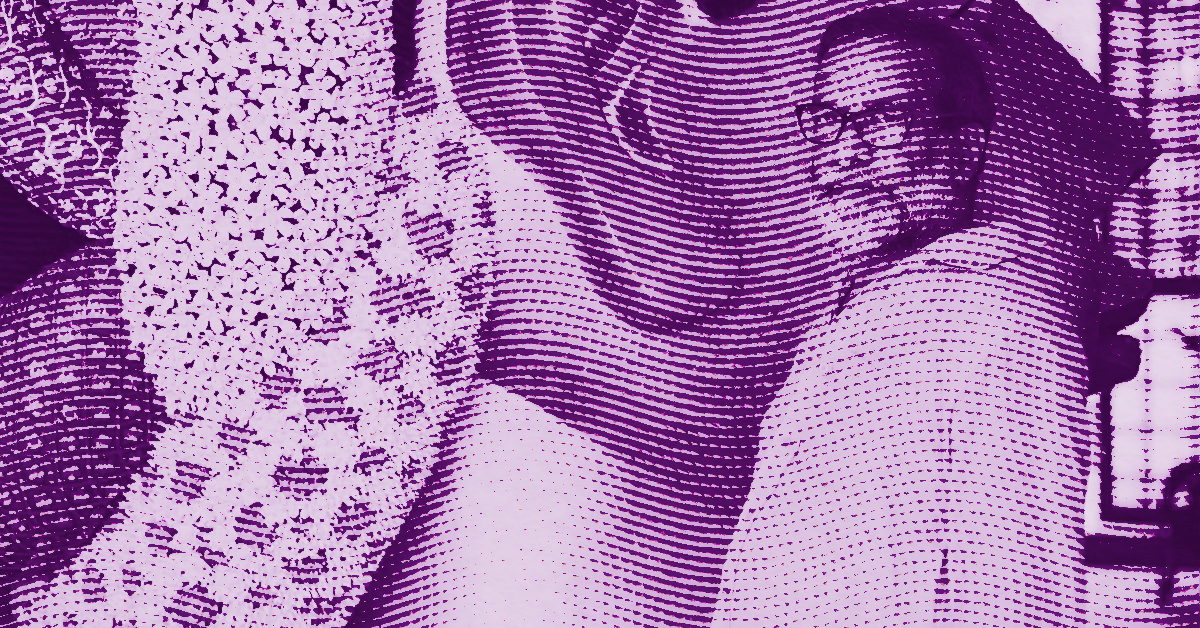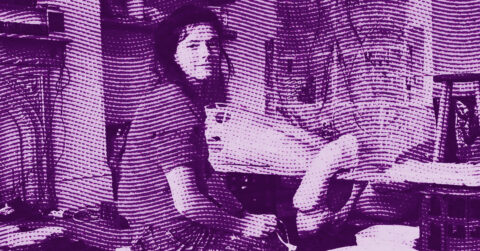Listen to me carefully, you bunch of snobs: here is the artist who dared to take Indian sculpture by the horns and propel it into modernity with the gentle violence of an aesthetic earthquake. Ravinder Reddy does not merely sculpt; he orchestrates a visual symphony where each monumental head becomes a manifesto, each golden gaze a proclamation. In contemporary Indian art, his works are totems of disturbing beauty, defying established codes with a boldness that borders on the sublime.
Born in 1956 in Suryapet in Andhra Pradesh, Reddy has forged a sculptural language that transcends the boundaries between tradition and contemporaneity. His colossal heads with wide-open eyes, his female bodies gilded with gold leaf, his faces that stare at you with the intensity of a mystical revelation, constitute a work of troubling coherence. These fiberglass and polyester resin sculptures, industrial materials diverted from their primary function, carry within them a symbolic charge that questions our perceptions of beauty, spirituality, and female identity.
Reddy’s originality lies in his ability to fuse the Indian sculptural heritage with a pop art sensibility, creating an artistic universe where Warhol would meet the goddesses of the Hindu pantheon. His monumental works, often three to four meters high, impose a physical presence that disrupts the exhibition space. The art critic Holland Cotter of the New York Times rightly noted that these sculptures possess a ceremonial quality that evokes both the temples of South India and contemporary amusement parks.
Bergsonian duration and the time-image of sculpture
To fully grasp the scope of Reddy’s work, one must follow the paths laid out by Henri Bergson in his reflection on duration and memory. For Bergson, duration is not the mechanical time of the clock, but a continuous flow where past, present, and future interpenetrate in a creative synthesis. This temporal conception finds a striking echo in Reddy’s sculptures, which seem to crystallize several temporalities in a single artistic gesture.
Let us observe his monumental female heads: they simultaneously bear the traces of traditional Indian art and the codes of Western modernity. These faces with stylized features evoke the Yakshis of Mathura while being inspired by contemporary pop aesthetics. This temporal layering is not accidental; it reveals a Bergsonian approach to creation where the artist draws on collective memory to shape new forms. Bergsonian duration is materialized here in the capacity of Reddy’s sculptures to condense millennia of artistic history into an expanded present.
This complex temporality is also expressed in the choice of materials. By using fiberglass instead of traditional bronze or marble, Reddy makes a break that is not only technical but conceptual. Fiberglass, an industrial era material, allows malleability that noble materials do not possess. This material flexibility reflects the plasticity of Bergsonian duration, where nothing is ever definitively fixed. The artist himself expressed it with remarkable clarity: “For me, fleeting emotions and feelings play no role in the creation of an object. I am interested in forms that are universally understood” [1].
This search for the universal through the particular is part of Bergsonian thought on art. For Bergson, the true artist is one who knows how to perceive beyond social conventions and perceptual habits to grasp reality in its living singularity. Reddy’s heads, with their disproportionately wide-open eyes and hypnotic fixity, seem to embody this Bergsonian vision of art as a revealer of a reality deeper than ordinary experience.
The apparent stillness of these sculptures paradoxically conceals an intense inner movement. Like the time-images that Deleuze identifies in modern cinema, Reddy’s works do not tell a linear story but propose a complex temporal experience where several durations coexist. The viewer facing a golden Devi head is confronted with an expanded present that contains in germ the entire history of divine representation in India, from the Gupta period to contemporary installations.
This temporal approach explains why Reddy favors the serial repetition of certain motifs. His female heads, developed in subtle variations, do not belong to industrial production but to a systematic exploration of the expressive possibilities contained in an archetypal form. Each variation reveals a different aspect of creative duration, as if the artist sought to exhaust the virtualities contained in his initial sculptural concept.
The architecture of sacred space
Reddy’s work also dialogues with architectural concerns, particularly those related to the conception of sacred space. His monumental sculptures do not merely occupy space; they structure and redefine it according to a logic borrowed as much from Indian temples as from contemporary art installations. This architectural dimension deserves thorough analysis as it reveals a fundamental aspect of his artistic approach.
Traditional Indian architecture, notably that of the Dravidian temples of southern India, is based on a conception of space as a manifestation of the divine. Every architectural element, from the base to the shrine towers (vimanas), participates in a cosmology where the building becomes a representation of the cosmos. This tradition finds an unexpected resonance in the way Reddy conceives the placement of his sculptures within the exhibition space.
Take for example his monumental installations: a four-meter-high head does not just ask to be looked at; it creates around itself a space of contemplation that evokes the experience of the faithful in a temple. This transformation of the museum space into a quasi-sacred place is no accident. It reveals a deep understanding of the mechanisms through which traditional Indian architecture organizes spiritual experience.
But Reddy does not merely replicate these mechanisms; he diverts and updates them. His sculptures create what could be called a “liminal space,” a threshold between the profane and the sacred that characterizes contemporary art. This liminality is notably expressed in the use of color and gilding. The gold that covers his sculptures immediately evokes religious iconography, but their application on forms with sometimes vulgar or exaggerated features creates a productive tension between attraction and repulsion, veneration and irony.
This architectural approach to sculpture is also manifested in the way Reddy conceives the series. His exhibitions do not simply present a collection of juxtaposed works but orchestrate a spatial progression reminiscent of the ritual journey within a complex temple. The viewer is engaged in a wandering that gradually reveals the different aspects of Reddy’s artistic universe, from monumental heads to full bodies, from chromatic variations to plays on scale.
This architectural dimension also reveals the influence of his time at British schools, notably Goldsmith College and the Royal College of Art in London in the early 1980s. British architecture, with its tradition of landscaped gardens and sculptural installations integrated into the landscape, certainly nourished his reflection on the articulation between work and space. But rather than adopting a purely Western approach, Reddy was able to synthesize these influences with his intimate knowledge of Indian sacred architecture.
This synthesis produces particularly striking effects in his outdoor works. When one of his gilded heads stands in a garden or on a public square, it instantly creates a new type of urban space that borrows as much from Western land art as from the tradition of temple sculptures integrated into the Indian landscape. These installations reveal Reddy’s ability to conceive sculpture as a structuring element of social and cultural space.
The analysis of this architectural dimension helps to understand why Reddy’s works resist overly strict attempts at categorization. They simultaneously participate in contemporary sculpture, installation, and ephemeral architecture. This generic hybridity reflects a post-colonial approach to art that rejects categories imposed by the West to invent its own modes of classification and expression.
Technique as manifesto
Reddy’s technical mastery is particularly interesting because it constitutes a fundamental aspect of his artistic project. His choice of fiberglass and polyester resin is not merely a material preference but a true aesthetic and political stance. By abandoning the traditional noble materials of sculpture, Reddy performs a democratization of the medium that fits into a broader effort to redefine contemporary Indian art.
Fiberglass has particular properties that perfectly serve Reddy’s artistic intentions. Its relative lightness allows the creation of monumental transportable works, an essential quality for an artist who regularly exhibits in international galleries. Its chromatic neutrality offers an ideal base for the application of bright colors and gilding that characterize his style. Finally, its malleability permits successive modifications and additions that correspond to his intuitive working method.
This technical approach reveals a design process for creation that opposes the Western tradition of subtractive sculpture. Rather than revealing a pre-existing form within the material, as suggested by the Michelangelo phenomenon, Reddy builds his sculptures through accumulation and layering. This additive method reflects an aesthetic of abundance that draws its sources from Indian decorative art, particularly in the tradition of jewelry and temple ornaments.
Reddy’s creative process often extends over several years for a single work. This extended temporality is not only technical; it reveals a meditative conception of art rooted in the Indian tradition of sadhana, prolonged spiritual practice. Each sculpture thus becomes the result of a prolonged dialogue between the artist and his creation, a dialogue that transforms both the work and its creator.
This temporal dimension of creation explains the richness of detail characterizing his sculptures. The elaborate hairstyles of his female heads, adorned with hundreds of meticulously sculpted flowers, testify to a patience and precision reminiscent of traditional Indian artisans. But these details are not purely decorative; they participate in a strategy of visual seduction that attracts the gaze to better reveal the conceptual complexity of the work.
The use of color by Reddy also deserves in-depth analysis. His chromatic palettes, dominated by golds, reds, and intense blues, directly draw inspiration from Indian religious iconography. However, the application of these colors on fiberglass surfaces creates effects of brightness and depth impossible to achieve with traditional techniques. This technical modernization of ancestral motifs perfectly illustrates his creative synthesis approach between tradition and innovation.
Gilding, in particular, holds a central place in his artistic vocabulary. Gold, the metal of the gods in Hindu tradition, bestows his sculptures with an immediately perceptible sacred aura. Yet its application on forms sometimes provocative or ironic creates a productive tension that questions our presuppositions about religious art and contemporary spirituality. This subversive use of traditional codes reveals the critical dimension of his work, too often obscured by the obviousness of its plastic beauty.
Sacred eroticism and the question of gender
One of the most interesting aspects of Reddy’s work lies in his ability to articulate eroticism and spirituality according to a dialectic that draws from the Indian artistic tradition while updating it for a contemporary audience. His female representations, whether monumental heads or complete bodies, explore ambiguous territories where desire mingles with veneration, where flesh becomes a support for transcendence.
This approach is part of the continuity of classical Indian art, notably that of the temples of Khajuraho or Konarak, where sexuality is integrated into the expression of the divine according to a cosmology that does not know the Judeo-Christian opposition between flesh and spirit. The erotic sculptures of these temples are not pornography but a celebration of the creative energy (shakti) animating the universe. Reddy updates this tradition by giving it contemporary forms that question the taboos of modernity.
His monumental female nudes, with their voluptuous forms and confident poses, claim a frontal sensuality that defies the conventions of Western contemporary art. These works do not seek to scandalize but assert a conception of female beauty drawing its references from both Indian popular imagery and scholarly art. This synthesis produces figures of remarkable evocative power that seem to emerge directly from the Indian collective unconscious.
The question of gender occupies a central place in this approach. Reddy does not simply portray women; he explores the cultural constructions of femininity in contemporary India. His heads, with sophisticated makeup and elaborate hairstyles, evoke both Bollywood actresses and traditional goddesses. This hybridization reveals the mechanisms by which contemporary popular culture reconfigures ancestral female archetypes.
This exploration of femininity never slips into complacency or exoticism. The gazes of his sculptures, always frontal and direct, challenge the viewer with an intensity that escapes any attempt at objectification. These disproportionately wide-open eyes, a distinctive feature of his style, function as mirrors reflecting the viewer’s own voyeuristic position. This mise en abyme of the gaze creates a disturbing complicity that transforms the act of looking into an introspective experience.
The artist himself emphasized the importance of this relationship to the gaze: “I always wanted the eyes to make the viewer feel a little dominated by their pure penetration” [2]. This domination of the female gaze reverses traditional power relations in artistic representation. Rather than being offered for male visual consumption, these bodies and faces impose their presence and subjectivity.
This inversion is also expressed in the treatment of scale. By monumentalizing his female figures, Reddy confers on them an authority that transforms the exhibition space into a female territory. The viewer, necessarily placed in a low-angle position facing these four-meter heads, is physically dominated by the female presence. This bodily experience of the sculpture reveals the performative dimension of Reddy’s art, which does not simply represent but stages gender relations.
Towards an aesthetics of synthesis
The analysis of Reddy’s work ultimately reveals the coherence of an artistic project that goes well beyond the issues of contemporary sculpture to touch on fundamental questions of cultural identity in a globalized world. His art proposes an original synthesis between tradition and modernity that avoids the pitfalls of nostalgic conservatism as well as mimetic Westernization.
This synthesis is expressed first in his ability to create an authentically contemporary sculptural language without denying his cultural sources. His works speak simultaneously to Western art enthusiasts familiar with pop art and to connoisseurs of Indian art sensitive to traditional references. This apparent universality actually hides a sophisticated artistic strategy that uses the codes of cultural globalization to better assert an irreducible aesthetic specificity.
Reddy’s strength lies in his ability to avoid the simplifications that threaten any art of synthesis. His sculptures do not propose a naive fusion between East and West but explore the productive tensions that arise from their confrontation. This dialectical approach produces works of remarkable conceptual complexity that resist univocal interpretations.
This resistance to univocal interpretation may be the most modern aspect of his art. In a cultural context marked by the proliferation of critical discourses and theoretical overinterpretation, Reddy offers works that retain their share of mystery. His sculptures question more than they assert, inquire more than they answer.
This quality of perpetual questioning explains the lasting fascination that his works exert. Unlike conceptual artworks that often exhaust themselves in their theoretical explanation, Reddy’s sculptures reveal new aspects with each encounter. This semantic inexhaustibility attests to a symbolic richness that draws its sources from the depths of the Indian collective imagination.
The growing influence of Reddy on young generations of Indian artists reveals the relevance of his approach. By proposing a model of creation that fully assumes its cultural sources while situating itself in international contemporaneity, he has opened a path that many are now trying to explore. This artistic posterity testifies to the accuracy of his initial intuition: it is possible to create authentically contemporary art without sacrificing cultural specificity on the altar of globalization.
At the end of this analysis, Reddy’s work appears as one of the most accomplished attempts at reconciling local and global, tradition and innovation, spirituality and sensuality. His monumental sculptures, through their physical presence as much as their symbolic charge, offer a total aesthetic experience that engages the viewer in their entirety. This totality of aesthetic experience, the supreme ambition of traditional Indian art, finds in Reddy’s art a contemporary actualization that reveals its unaltered relevance.
In a world where cultural identities are often reduced to folkloric or touristic signifiers, Reddy’s art offers an alternative that preserves symbolic depth while fully embracing modernity. This path, difficult to trace and even harder to maintain, perhaps constitutes one of the major challenges of contemporary art in post-colonial societies. In this sense, Ravinder Reddy’s work goes beyond sculpture to touch on the most current questions of artistic creation in a changing world.
- Cited on the Artsy site, “G. Ravinder Reddy Biography,” article accessed in July 2025
- Cited in Prachi Sibal, “Why sculptor G Ravinder Reddy is obsessed with large, disembodied heads of women,” Scroll.in, August 7, 2017.
















